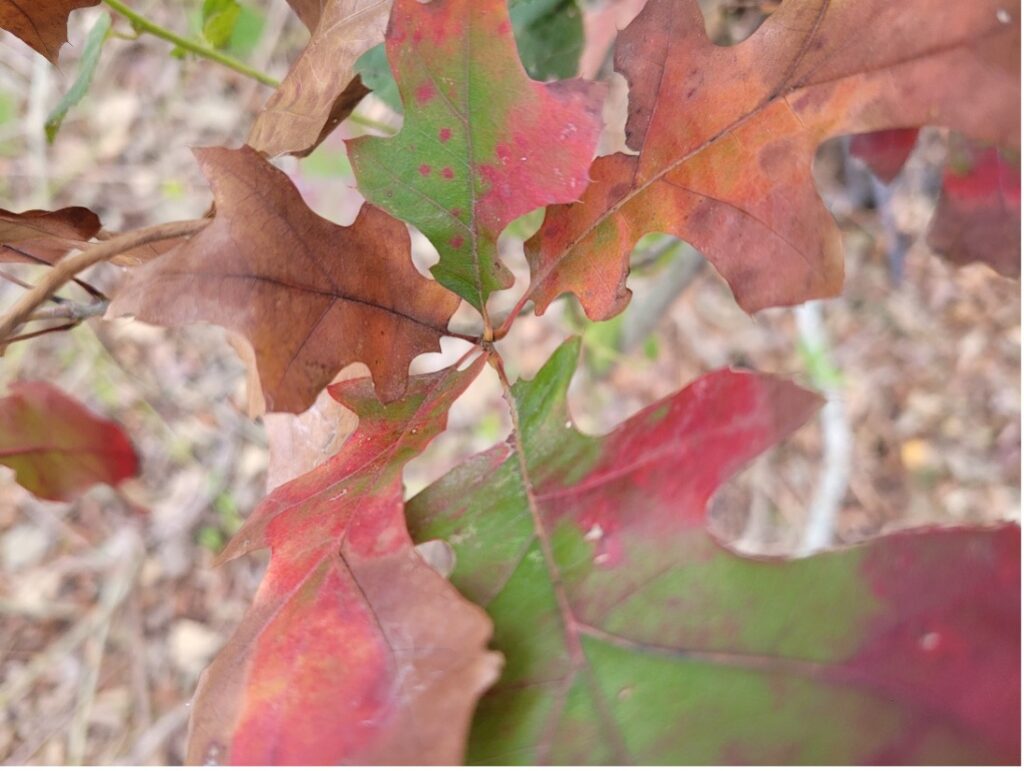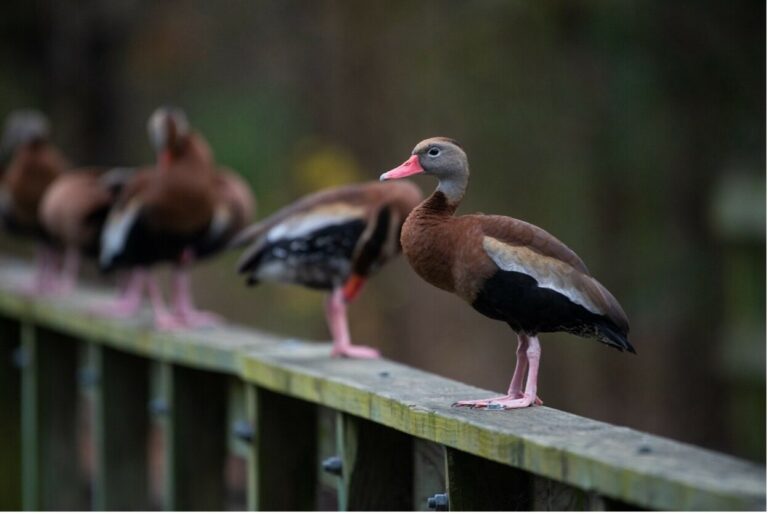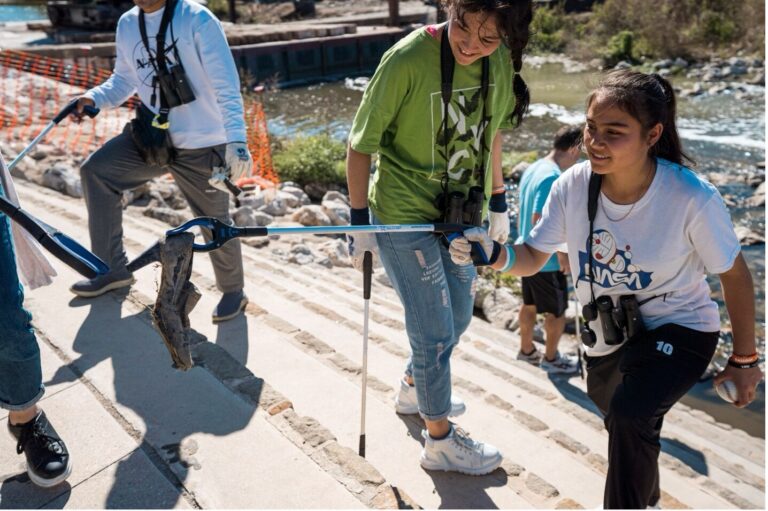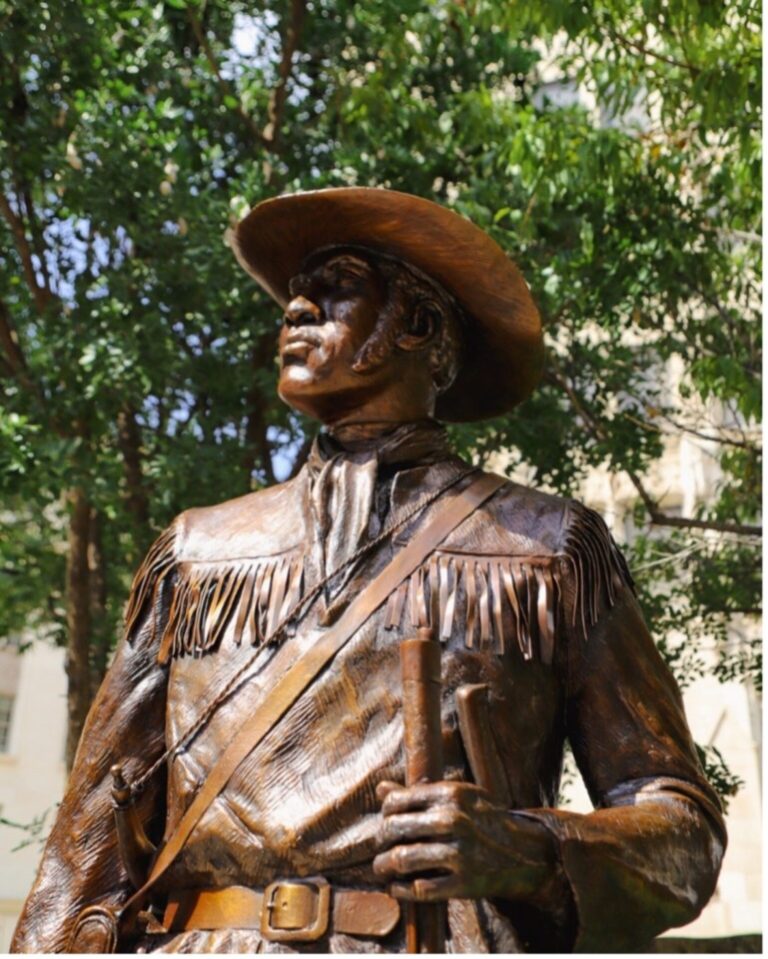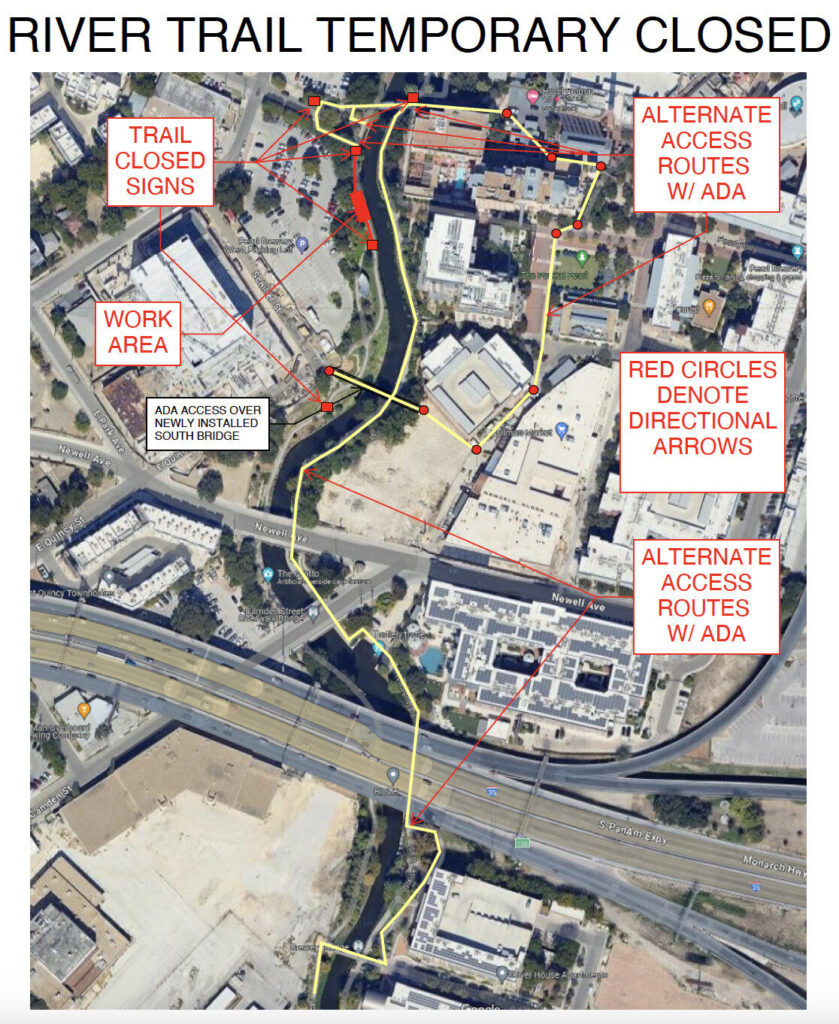Last Updated on January 30, 2024
Some of the most enchanting parts of autumn are the splashes of red, yellow, and brown. Although not a traditional leaf peeping destination, Texas has a remarkable array of colors that will surprise even a visitor from Vermont! Take a walk in your neighborhood or along the San Antonio River, and you’ll notice that some of the deciduous trees and plants have already begun shedding their leaves, often forming a thin (or not-so-thin) blanket across the ground.
Traditionally, we associate this time of year with increased yardwork and the constant roar of leaf blowers. Many of us can recall the childlike joy of jumping in a big pile of leaves! But if you’re looking for less yard work and you would like to help the environment, then there is an excellent solution for you: leave the leaves this winter, and let your yard go natural. What a ‘releaf’!
Beautiful fall colors along the San Antonio River.
Did you know this blanket is a crucial winter shelter for insects like butterflies and bees?
There are many benefits to leaving the leaves and dead vegetation in your yard. Fallen leaves are a part of nature’s annual cycle, and these leaves play a surprisingly critical role in the ecosystem, including those of the San Antonio River Basin. Colder temperatures can be harsh on insects and their food supplies. The mystic Luna moth (Actias luna), spectacular fireflies, graceful swallowtail butterflies, and our incredibly important native, solitary bees (and more!) all depend on leaf litter to protect them over the winter. In their natural habitat, even the eastern red bat (Lasiurus borealis) has been known to cozy up in a blanket of leaves!
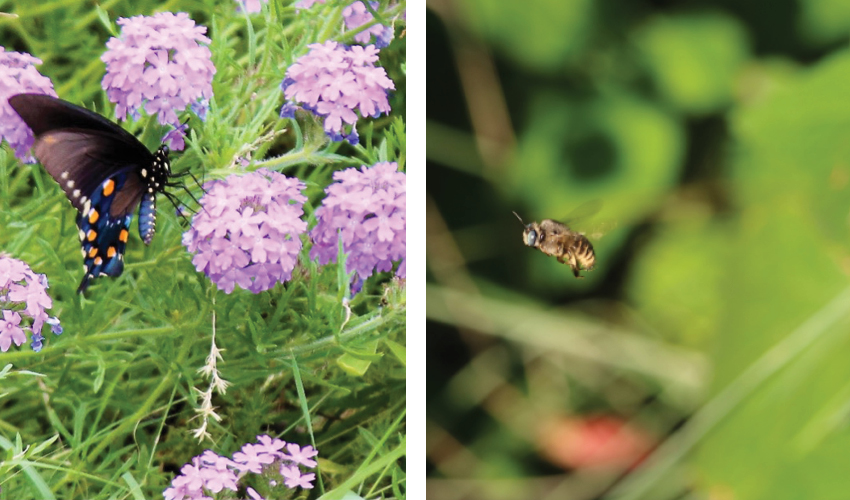
Left: Pipevine Swallowtail (Battus philenor) Right: Parkinson’s carpenter bee (Xylocopa tabaniformis ssp. Parkinsoniae) in mid-flight Photo Credit: Lee Marlowe
Remember the solitary bees we just mentioned? Bees may get a bad reputation, but these little guys cannot or generally will not sting. Not only do they appreciate a natural, native yard, but they can take advantage of dead vegetation like old stems from spring flowers. Solitary bees make small, inconspicuous nests in small crevices, often using dead branches or stems. So do not throw out those old flower stalks just yet!
During the winter, insects are simply looking for places to stay protected and out of the cold. Some of these insects will be hidden, like swallowtail butterfly species which overwinter in the pupa stage. Fun Fact: Their chrysalises (butterfly pupae) accurately mimic a dead leaf! A little layer of leaves on the ground or around plants offers a safe, little hiding spot where you probably won’t even notice them.
Can you spot the chrysalis mimicking a leaf?
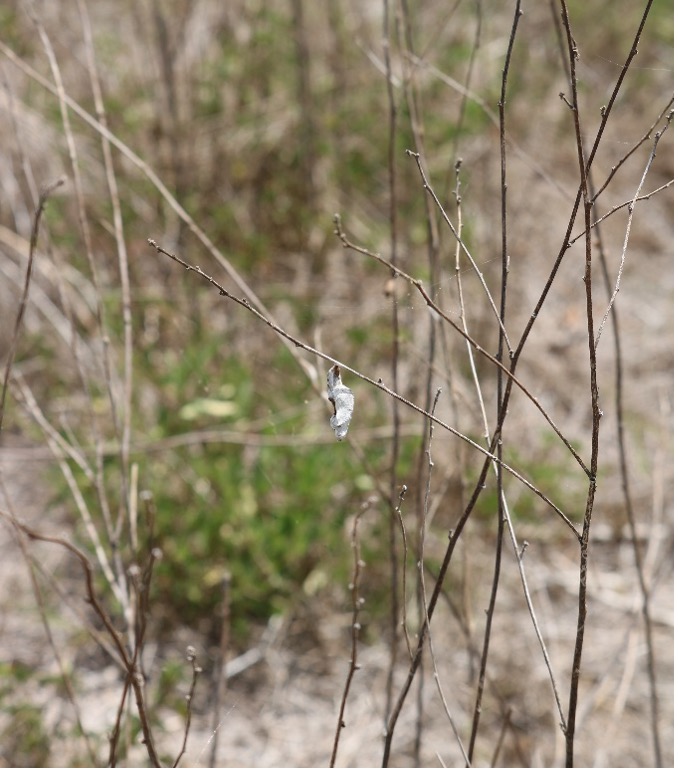
There it is!!
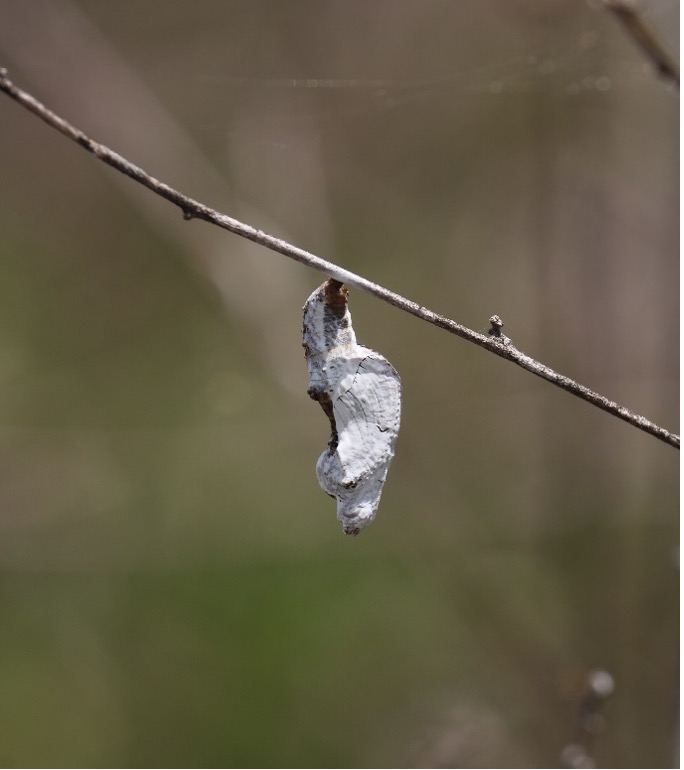
Other insects can be found in each of the metamorphosis life stages (egg, larva, pupa, or adult), and some of them undergo a process similar to hibernation called diapause. During states of diapause, having safe, undisturbed shelter is critical for the survival of many different insects. In turn, insects are a significant part of nearly every food web, feeding masses of birds, lizards, small mammals, and more. Even a tiny hummingbird will feed small insects to its nestlings!
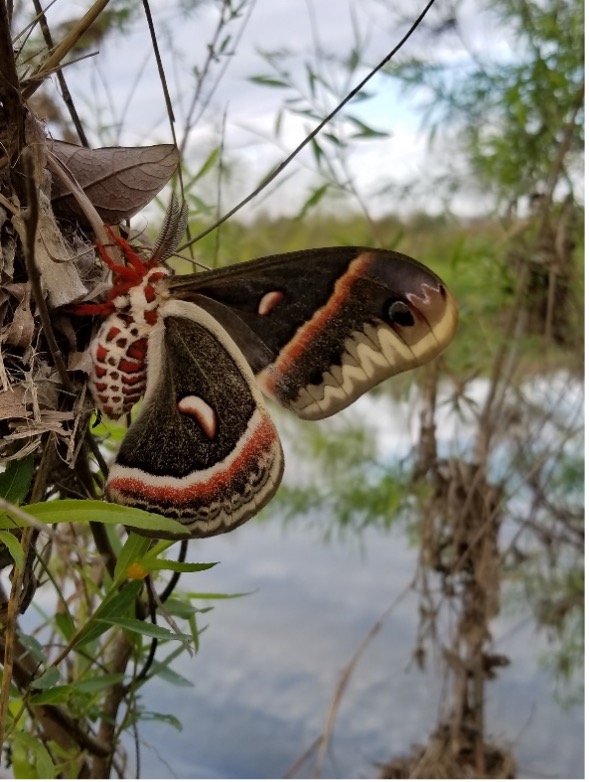
North America’s largest native moth, the Cecropia moth (Hyalophora cecropia), enters diapause as a pupa to survive the winter.
Did you know that the leaves and grass clippings from yard work can also harm the health of local waterways?
Yard clippings blown or raked into the street are full of nutrients. When they are carried by stormwater runoff into our local waterways, the nutrients in these clippings, as well as the chemical in fertilizers and pesticides, can lead to algae blooms and fish kills.
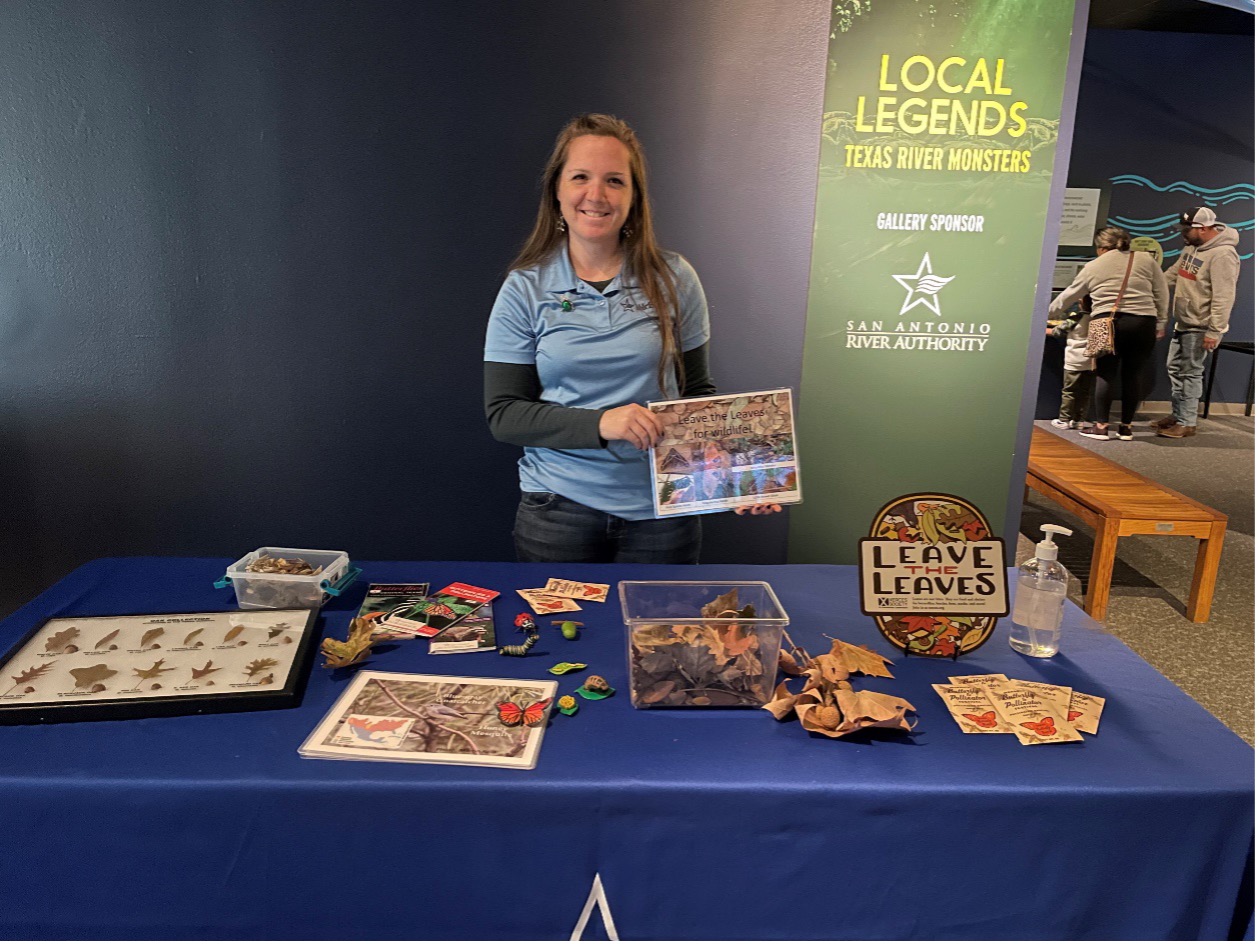
Alicia Ramsey (pictured above), a scientist for the River Authority, discussed protecting pollinators last month at the Witte Museum’s Saturday with a Scientist series.
Say it with us: LEAVES ARE NOT LITTER! Not only do they add color and texture to your yard, but they also provide a habitat to sustain a variety of pollinators for a healthier, more sustainable watershed. Sounds like a win-win for humans and insects alike!
P.S. Want to spread the word on #leavingtheleaves? Check out these free social media graphics from the Xerces Society for Invertebrate Conservation.
Sign up for the River Reach
River Reach is a quarterly, 12-page newsletter that is designed to inform the San Antonio River Authority’s constituents about the agency’s many projects, serve as a communication vehicle for the board of directors and foster a sense of unity and identity among the residents of Bexar, Wilson, Karnes, and Goliad counties.
If you wish to be placed on the mailing list for River Reach, please contact us or complete the form.

